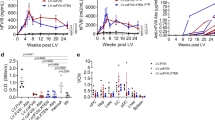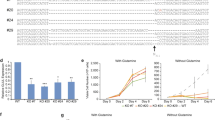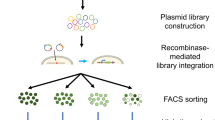Abstract
Factor IX is the precursor of a serine protease that functions in the intrinsic blood clotting pathway1. Deficiencies in this plasma glycoprotein result in haemophilia B (or Christmas disease) and occur in about 1 in 30,000 males2. Patients are currently treated with fresh frozen plasma or prothrombin complex concentrates prepared from pooled plasma from normal individuals. There are several problems with this method of treatment, including the probable exposure of the patients to contaminants such as the viral agents responsible for hepatitis and AIDS (acquired immune deficiency syndrome). As a first step towards an alternative source of pure human factor IX, we report here on the use of recombinant DNA techniques to produce biologically active factor IX in cultured mammalian cells. Stable cell lines were produced by co-transfecting a baby hamster kidney (BHK) cell line with a plasmid containing a gene for factor IX and a plasmid containing a selectable marker. Protein secreted by these cell lines reduces the clotting time of plasma from factor IX-deficient patients. We present additional evidence that this protein is authentic human factor IX.
This is a preview of subscription content, access via your institution
Access options
Subscribe to this journal
Receive 51 print issues and online access
$199.00 per year
only $3.90 per issue
Buy this article
- Purchase on Springer Link
- Instant access to full article PDF
Prices may be subject to local taxes which are calculated during checkout
Similar content being viewed by others
References
Jackson, C. M. & Nemerson, Y. A. Rev. Biochem. 49, 765–811 (1980).
McKee, P. A. in The Metabolic Basis of Inherited Disease (eds Stanbury, J. B., Wyngaarden, J. B., Frederickson, D. S., Goldstein, J. L. & Brown, M. S.) 1531–1560 (McGraw-Hill, New York, 1983).
Prowse, C. V. & Esnouf, M. P. Biochem. Soc. Trans. 5, 255–256 (1977).
Suttie, J. W. CRC Crit. Rev. Biochem. 8, 191–235 (1980).
Kurachi, K. & Davie, E. W. Proc. natn. Acad. Sci. U.S.A. 79, 6461–6464 (1982).
Southern, P. J. & Berg, P. J. molec. appl. Genet. 1, 327–341 (1982).
Procter, R. R. & Rapaport, S. I. Am. J. clin. Path. 36, 212–219 (1961).
Bajaj, S. P., Rapaport, S. I. & Brown, S. F. J. biol. Chem. 256, 253–259 (1981).
DiScipio, R. G., Hermodson, M. A., Yates, S. G. & Davie, E. W. Biochemistry 16, 698–706 (1977).
Buchtal, S. D. & Bell, R. G. Biochemistry 22, 1077–1082 (1983).
Graham, F. L. & van der Eb, A. J. Virology 52, 456–467 (1973).
Anson, D. S. et al. EMBO J. 3, 1053–1060 (1984).
Berkner, K. L. & Sharp, P. Nucleic Acids Res. 13, 841–857 (1985).
Author information
Authors and Affiliations
Rights and permissions
About this article
Cite this article
Busby, S., Kumar, A., Joseph, M. et al. Expression of active human factor IX in transfected cells. Nature 316, 271–273 (1985). https://doi.org/10.1038/316271a0
Received:
Accepted:
Issue Date:
DOI: https://doi.org/10.1038/316271a0
This article is cited by
-
Recombinant human protein C, protein S and thrombomodulin as antithrombotics
Perspectives in Drug Discovery and Design (1994)
-
Chinese hamster ovary cell growth and interferon production kinetics in stirred batch culture
Applied Microbiology and Biotechnology (1991)
Comments
By submitting a comment you agree to abide by our Terms and Community Guidelines. If you find something abusive or that does not comply with our terms or guidelines please flag it as inappropriate.



